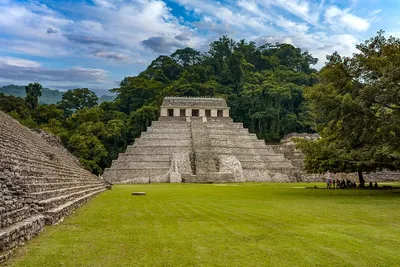
Unveiling Palenque: Exploring Mexico’s Ancient Gem in Chiapas
Unveiling Palenque: Exploring Mexico’s Ancient Gem in Chiapas
Palenque Chiapas has become an important tourist destination in Mexico, primarily known for its archeology and history, beautiful and refreshing water attractions, and succulent cuisine.
This “Magical Town” is of Mayan origin, head of the municipality of the same name located in the north of Chiapas.
The indigenous population is formed mainly by the Choles, Tzeltal, and Lacandona ethnic groups.
Palenque was founded in 1567 by the Spanish Dominican friar Pedro Lorenzo de la Nada, who managed to integrate the “Choles” community.
The valuable archaeological zone was discovered in 1740, and in 1813 the Cortes de Cádiz ranked Palenque in the category of Villa; then, the title of City was granted in 1972, and finally, Pueblo Mágico in 2015.
Where is Palanque, Chiapas?
Palenque’s municipality borders Guatemala to the southeast. It has three border sectors with the state of Tabasco and is also a neighbor of the Chiapas municipalities of Catazajá, La Libertad, Ocosingo, Chilón, and Salto de Agua.
The closest major cities to Palenque are Villahermosa in Tabasco, about 144 Km to the west, and San Cristóbal de las Casas, 220 Km to the south.
Palenque’s climate
Palenque has a tropical, warm, humid, and rainy climate.
The annual average temperature is 27 °C, which rises to almost 30 °C in May, the hottest month, and drops during the winter as low as 19 °C in January.
During the summer, the heat can rise to 36 °C, while during the cooler lows, the temperature never drops below 17 °C on the coldest winter nights.
It rains a lot in Palenque, an average of 2,300 mm per year, and in any given month, there can be a downpour, although the heaviest rainy season is between June and October.
TOP attractions in Palenque, Chiapas
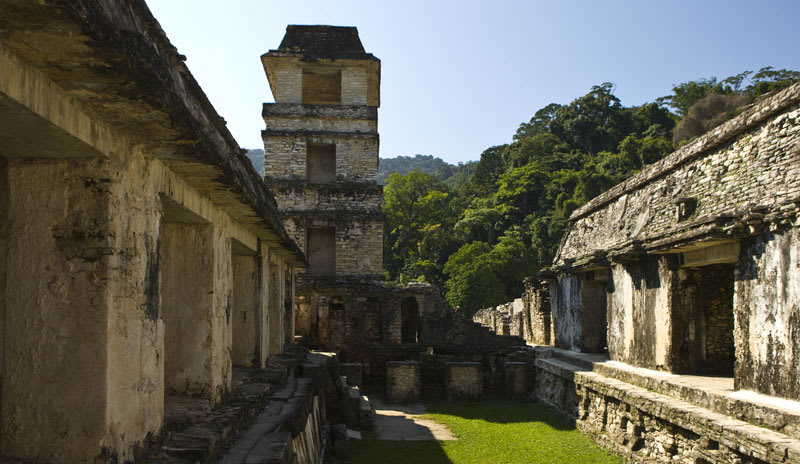
As I mentioned before, Palenque is a fundamental place in the pre-Columbian history of Mexico for its size, majesty, architectural quality, and talent displayed in its multiple artistic forms.
The imposing Mayan City is a must-see for any Mexican history enthusiast. It is one of the most visited sites by international archaeological tourism and foreign specialists.
To round off the tour to the archaeological site, a visit to the Alberto Ruz Lhuillier Site Museum is a must.
Somewhat overshadowed by the fame of Palenque, other sites of great importance are located near the City, such as Bonampak, Yaxchilán, and Toniná.
And since not everything is about archaeological ruins in Chiapas, Palenque and its surroundings offer charming natural attractions for outdoor recreation, such as the Aluxes Ecopark, the Agua Azul Waterfalls, the Misol Ha Waterfall, and the Agua Clara water park.
Another place of interest near Palenque is the small town of Catazajá.
Palenque’s Archaeological Zone: Why it’s important
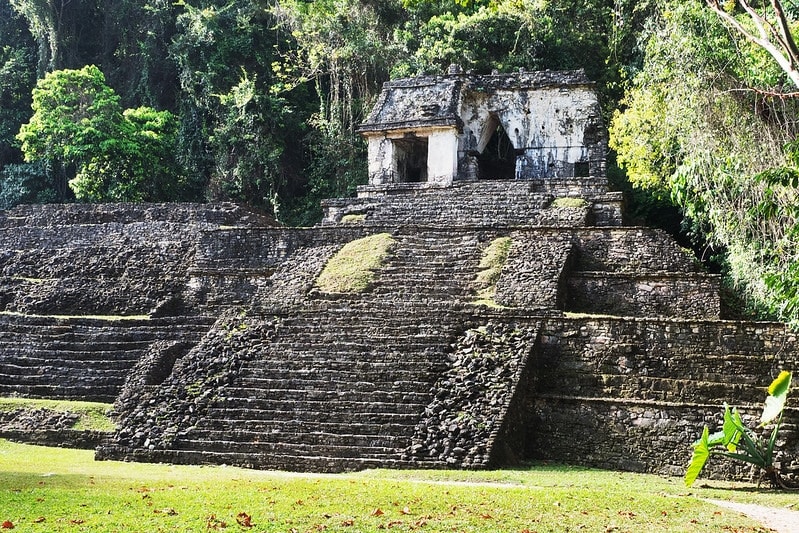
The archaeological site of Palenque is one of the most impressive of the Mayan culture, although it has only been explored and excavated in a small fraction of its extension.
It is believed that more than a thousand structures are still buried in the thicket, and those uncovered represent a remarkable exhibition of the construction and artistic skills of the Mayas.
Palenque boasts the distinction of National Park and World Heritage Site.
It was built during the Classic Period, abandoned before the conquest, and rediscovered in the 18th century.
The Temple of the Inscriptions, the Palace, the Set of the Crosses, the Aqueduct, and other buildings stand out in what has been discovered.
The Temple of the Inscriptions
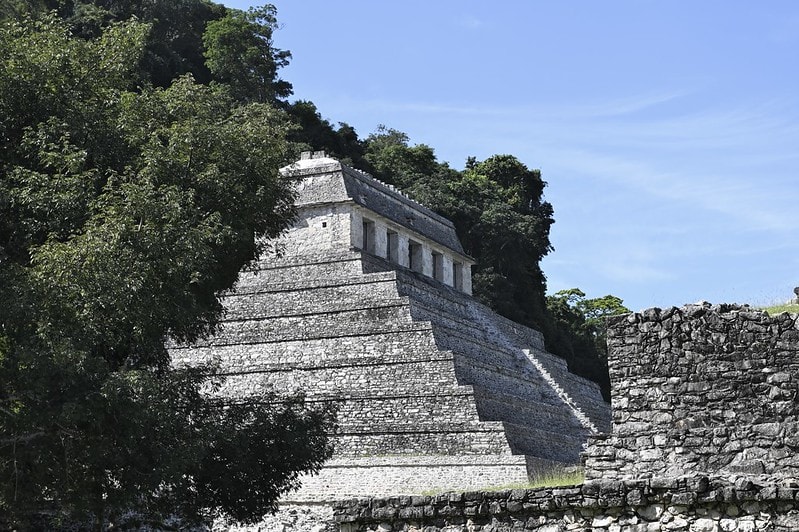
This famous temple lies in an area known as the Great Plaza on a natural slope.
It was initiated by the famous Mayan ruler Pakal the Great and finished by his son in the 80s of the VII century.
It is named for the significant number of hieroglyphic texts and stucco reliefs that have contributed to understanding the Maya civilization.
In 1949 the tomb of Pakal was found under the temple.
The building is a pyramid of 8 levels and a temple representing the nine levels of the Mayan underworld, measuring almost 23 meters tall.
El Palacio
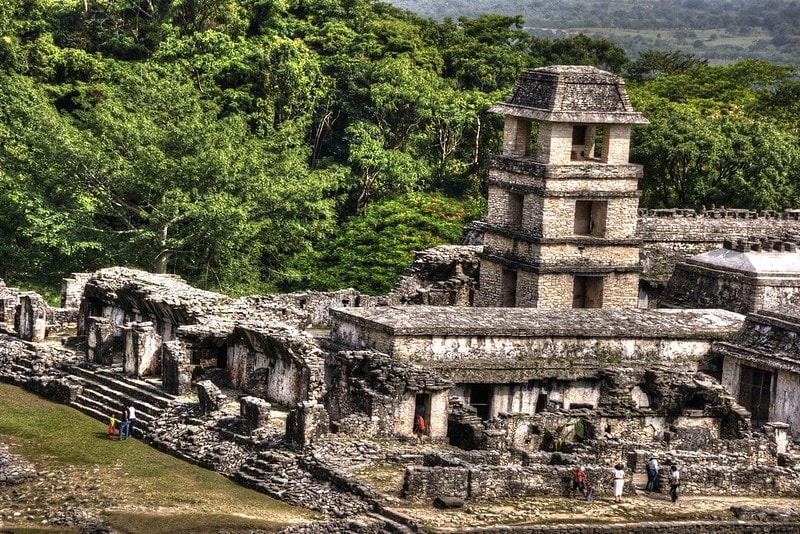
This splendid building has an area of about half a hectare, measuring 86 meters from north to south and 59 meters from east to west.
It has wide staircases on three of its facades and was erected by Pakal over the remains of previous constructions.
In the center of the Palace stands out a tower of four bodies built entirely in masonry with thick pillars, which is believed to have been used for defensive surveillance (although another version indicates that it could have had astronomical purposes).
Its spacious patios, the number of rooms, and the amply decorated galleries indicate that it was the scene of great splendors.
Conjunto de las Cruces

This site comprises three main buildings: the Temple of the Cross, the Temple of the Foliated Cross, and the Temple of the Sun.
All three are characterized for having been erected on stepped pyramids and for their reliefs.
The complex was erected to honor Chan Bahlum II on his ascension to the throne after the death of Pakal the Great. A dead king is a dead king! The saying goes.
You may want to read: What is The Mayan Route? A Road Trip Adventure You Cannot Miss
The name of Las Cruces is improper since the temples are representations of the tree of creation according to Mayan mythology.
The central board was removed from the Temple of the Cross with the representation of a monster from which a corn plant sprouts, which is conserved in the National Museum of Anthropology.
The Aqueduct

El Acueducto is a three-meter-deep structure that leads the waters of the Otulum River below the main square on the eastern side of the Palace.
Downstream, at the site called “Baño de la Reina,” there is a stone bridge. The Maya were very skilled in the construction of water supply systems.
In July 2016, the National Institute of Anthropology and History announced the discovery of a complex hydraulic system under the tomb of Pakal the Great.
It is believed that it could be related to an inscription engraved in the ruler’s tomb, which states that to enter the underworld, he had to submerge himself in water.
Other buildings of interest in Palenque, Chiapas
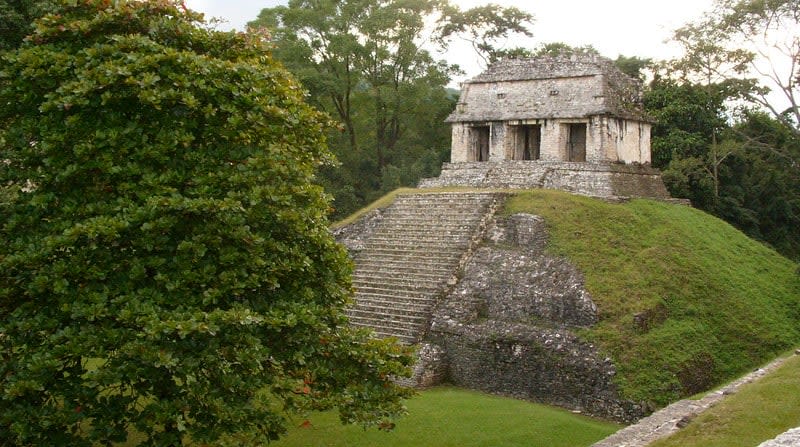
El Templo del Conde (Temple of the Count) has a somewhat extravagant history since, in pre-Hispanic Mexico, there were no counts.
A steep staircase accesses the Count’s Temple.
It is so named because it was the dwelling place of the French explorer and artist Jean-Frédéric Waldeck when he spent some time in Palenque in the 1820s; Waldeck called himself Count.
The Temple of the Lion had a neat bas-relief, unfortunately, destroyed, with a king with a throne in the form of a two-headed jaguar.
Visit the Alberto Ruz Lhuillier Site Museum
This museum in the archaeological site bears the name of the French-Mexican archaeologist Alberto Ruz Lhuillier, a notable researcher of the Mesoamerican Mayan cities and discoverer in the middle of the XX century of the tomb of Pakal the Great in the Temple of the Inscriptions of Palenque.
The exhibit comprises pieces rescued from the site, explanatory models, and other aids.
Among the most relevant objects are ceramics, funeral ornaments, ceremonial tablets and offerings, various sculptures, the death mask of Pakal the Great, and that of the so-called Red Queen, a woman who was supposedly Ahpo-Hel, the wife of the famous ruler.
Explore the Bonampak Archaeological Zone
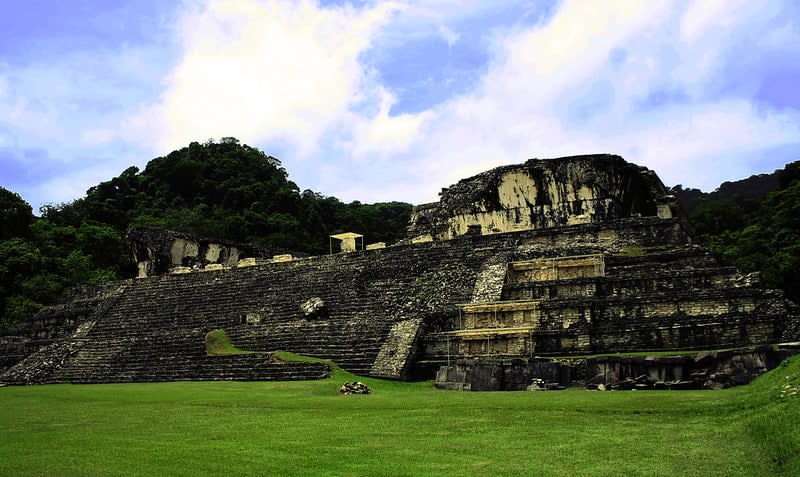
If you made the trip to Palenque Chiapas, it is worth traveling another 150 km further southeast to visit the interesting Bonampak Archaeological Zone in the heart of the Lacandon Jungle.
The great attraction of this Mayan site near the border with Guatemala is its mural paintings, made during the 8th century.
These paintings are a very neat testimony of episodes in the life of the Maya.
The magnificent images include artisans at work; musicians playing flutes, drums, and other instruments; dances, war scenes, and prisoners prepared for sacrifice.
Yaxchilan Archaeological Zone
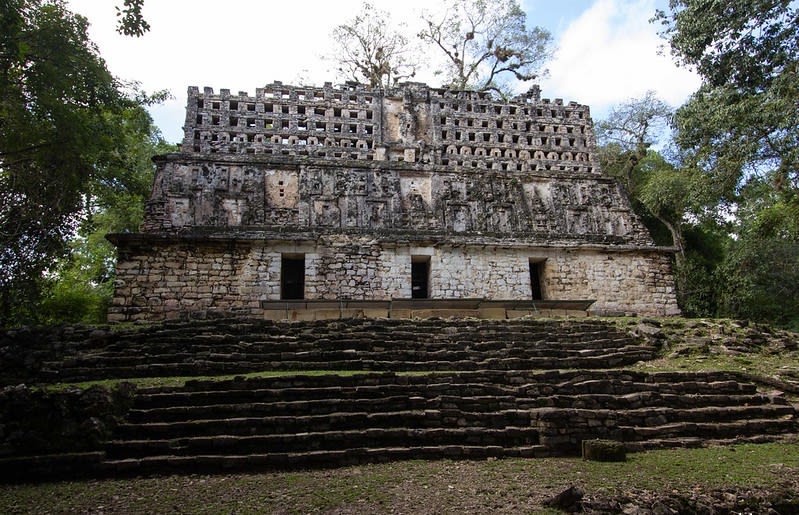
164 km southeast of Palenque is another archaeological site in front of a bank of the Usumacinta River.
Yaxchilan was an essential center of Maya power during the Classic Period, exercising dominion over Bonampak and rivaling Piedras Negras.
The site is distinguished by its artistic wealth, especially the carved stones on the lintels of the doors, and by the hieroglyphic texts that provided valuable information about the history of the City and its governmental dynasties.
The stelae, the Great Plaza, and the Great Acropolis are other impressive structures.
Toniná Archaeological Zone

I also recommend visiting this Mayan archaeological site 113 km from Palenque, near Ocosingo.
Toniná lived its period of splendor between the VII and IX centuries, where four of the seven large platforms have been preserved.
- On the third platform, the Palace of the Underworld stands out
- On the fourth, the Palace of the Grecas and the War
- The sixth platform contains the Mural of the Four Suns, an allegory of the Four Cosmic Ages
- On the seventh platform stand out the Temple of the Prisoners and the Temple of the Smoking Mirror, the highest in Mesoamerica
Toniná has splendid artistic manifestations, mainly the high reliefs in stone and stucco and the architectural coverings to two slopes with the form of isosceles triangles.
Visit the Aluxes Ecopark in Palenque, Chiapas

This wildlife park is a refuge that develops an authentically environmentalist concept, favoring the maximum interaction of visitors with the animals.
It is located near the archaeological ruins and is primarily sourced by the authorities’ seizures of animals at risk.
You can feed crocodiles and manatees and be in contact with baby crocodiles, scarlet macaws, and giant tortoises.
They also offer boat rides and guided day and night tours for groups of at least four. Aluxes Ecopark is open every day from 9 AM to 4:30 PM.
Admire the Agua Azul Waterfalls
These waterfalls are considered the most beautiful in Mexico and are located in a protected area of flora and fauna in the Chiapas municipality of Tumbalá, 63 km from Palenque.
The precious turquoise blue color water contrast with the bubbly particles in suspension. Together with the foam’s white and the vegetation’s green, it forms a vignette of incomparable beauty.
The current descends staggered, forming waterfalls and natural pools in which it is a delight to dive.
The mineral-rich waters also petrify tree trunks, usually seen on the banks or in the middle of the stream.
What is the Misol Ha waterfall like?
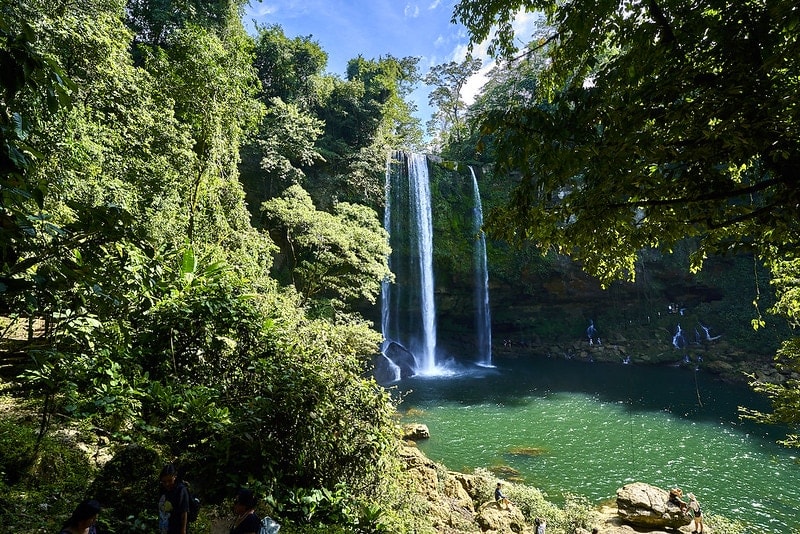
This 30-meter-tall waterfall is 20 km from Palenque; it falls, forming a pool where you can swim, taking the proper precautions.
The currents formed several waterfalls in the middle of the dense vegetation.
These were some of the locations of the famous Predator movie starring Arnold Schwarzenegger and filmed entirely in Mexican places.
The waterfall area is managed by a community of landowners that also offer ecological lodging.
Cool off at the Balneario Agua Clara (water park)
This ecotourism water park is about 54 km from Palenque on the road to the Agua Azul Waterfalls on Highway 199.
A network of 5 rivers forms the water currents: the Shumulhá or Agua Clara, the Tulijá, the Michol, the Bascam, and the Misol Ha.
You can enjoy swimming, canoeing, horseback riding, and hiking within the park and its surroundings.
In the exuberant flora, it is possible to admire plants such as aguacatillo, chicozapote colorado, arnica, begonia, wild chincuya, bamboo, and copal.
Visit Catazaja, Chiapas (near Palenque)
30 km north of Palenque on Highway 199 is the small town of Catazaja, whose indigenous name means “valley covered with water.”
In fact, the main tourist attractions of the place are its water bodies, especially the Laguna de Catazaja, where you can admire manatees, otters, and turtles and maybe catch a snook, a carp, or a guabina fish.
However, the most exciting fish in the lagoon is the pejelagarto, a fascinating species for its role in the evolution and its prized meat.
Get some souvenirs

Palenque artisans, mainly indigenous Choles, Tzeltales, and Lacondones, make beautiful and colorful pieces, ranging from regional costumes and embroidered clothing to leather bags and backpacks.
They are also very skilled in the work of ceramics, wood, metals, ornamental stones, and amber and the elaboration of pyrography on leather.
Another local handicraft specialty is the so-called dream catchers, hoops with a net decorated with light elements, such as feathers.
In these confections, Palenque’s artisans use the wide range of colors offered by the plumage of the local birds, although the pieces are not exactly environmentally friendly.
Palenque Chiapas gastronomy
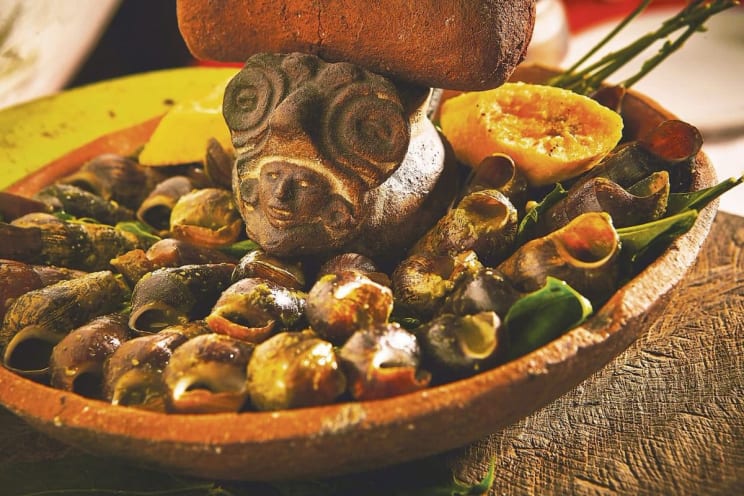
The culinary art of Palenque is strongly impregnated by pre-Hispanic cuisine and its emblematic autochthonous elements, such as corn, chili peppers, and cacao.
Among the most symbolic dishes of the vast pre-Columbian gastronomic legacy is shote con momo, a recipe based on river snails, corn dough, and hierba Santa leaves.
Also, the duck in chilmol, in which the meat is cooked in a sauce of tomatoes, chiles, and other ingredients; the ancient recipe is with wild duck, but due to its scarcity, it has had to migrate to those of hatchery and chicken.
Salpicón de venado (deer salpicón), fish sudado and the typical Chiapas tamales are other delicacies that you cannot miss in Palenque.
All these specialties and other Mexican and international cuisines can be found in Palenque’s restaurants.
One of the typical drinks is tascalate, prepared with chocolate, corn dough, and achiote.
Other common beverages are chocolate de molinillo, café de olla, chicha, balché, and pozol. Among the sweets are those made with wild honey.
Catch one of Palenque’s festivities
The fair in honor of Santo Domingo de Guzmán, the town’s patron saint, takes place during the first ten days of August.
For the occasion, the Magical Town is filled with the joy and color of the traditional indigenous dances and the music of marimbas, a percussion instrument similar to the xylophone, whose modern version of the double keyboard was invented in 1892 by the musician and artisan from Chiapas, Corazón de Jesús Borras Moreno.
As in all of Mexico, Palenque celebrates Holy Week, Independence Day (September 16), the feast of All Saints, the Day of the Dead, and the Virgin of Guadalupe on December 12.
Best Hotels in Palenque
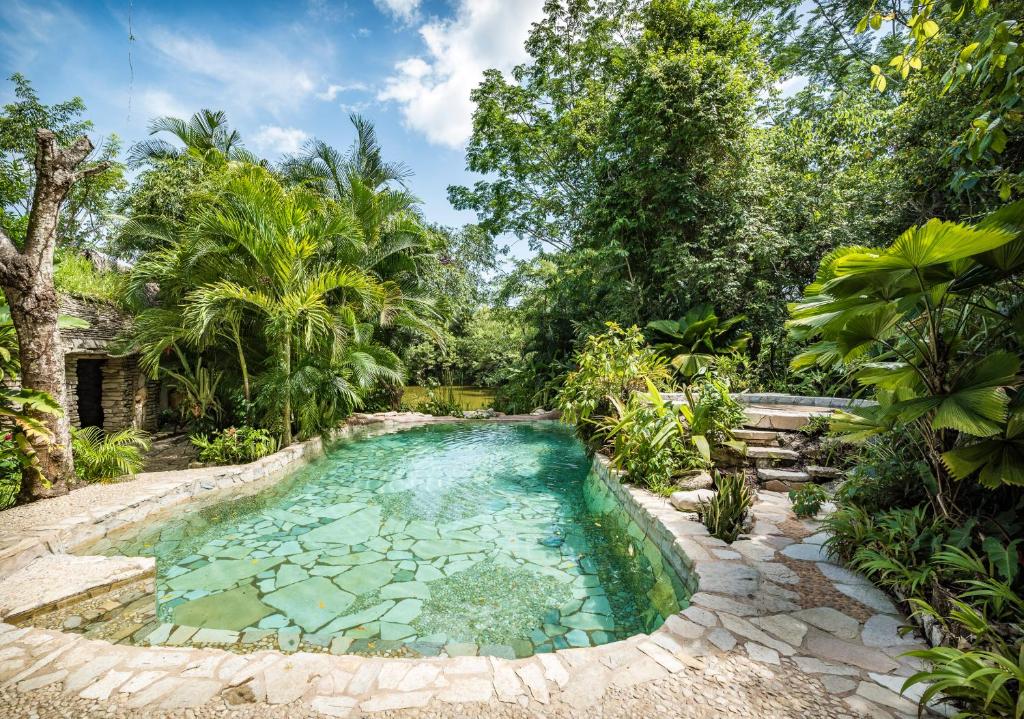
Hotel Quinta Chanabnal is a beautiful hotel just 2 Km from the Archaeological Zone; it is a paradisiacal place in the middle of the jungle, tastefully decorated with nice swimming pools.
Hotel Chablis Palenque is very clean, with all the necessary amenities and friendly staff.
Hotel Maya Tulipanes Palenque is another lodging option with good facilities and excellent service.
Other options are Mision Palenque, Chan-Kah Resort Village, and Hotel Villa Mercedes Palenque.
Recommended restaurants
Bajlum Restaurant is the best choice when it comes to pre-Hispanic cuisine; they offer great dishes such as white-tailed deer, wild turkey, and peccary.
Bajlum boasts an excellent reputation where you will live an unforgettable pre-Columbian gastronomic experience; make your reservation a few days in advance.
If exotic meat is not your thing, you can sample classic Italian cuisine at Monte Verde Trattoria and Pizzeria.
Maya Cañada Restaurant, Saraguatos, and Café Jade are other exquisite dining options in Palenque.
I hope this guide will be handy on your trip to Palenque. I wish you a happy stay among pyramids, temples, waterfalls, and fantastic food. See you next time. Vamonos!